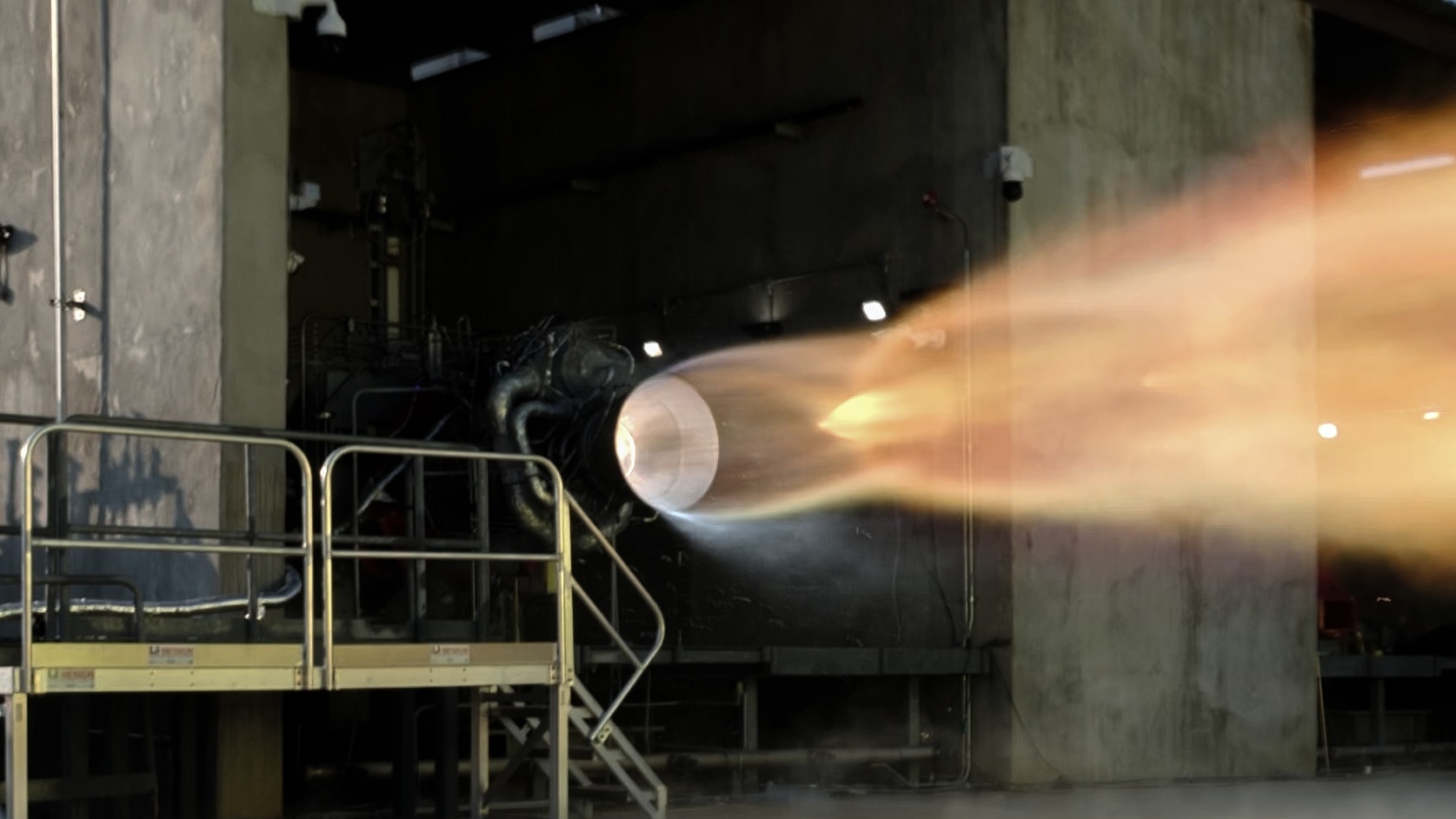11.08.2024

A hot-fire test of Rocket Lab’s Archimedes engine, to be used on its Neutron rocket. Credit: Rocket Lab
LOS ANGELES — Rocket Lab has fired its Archimedes engine for the first time, a key step in its efforts to develop the Neutron reusable rocket.
The company announced Aug. 8 that it performed the first static-fire test of Archimedes at NASA’s Stennis Space Center in Mississippi. The test, which took place earlier this month, ran the methane/liquid oxygen engine to 102% of its rated power during a burn of undisclosed duration.
Peter Beck, Rocket Lab’s chief executive, noted on an earnings call that coincided with the announcement that the engine that was tested was a “flight-ready” version. “It’s fairly common to see downscaled engines or early-stage prototypes used for a couple of years before companies actually move into putting something on the stand that could fly, but we didn’t do that,” he said, part of an effort to fast-track development of Archimedes.
“From here it is about dialing the engine in, building a bunch more of them and getting them rolling off the production line,” he said.
Archimedes, designed to produce 165,000 pounds-force of thrust, will be used on Neutron, the medium-class reusable rocket that Rocket Lab is developing to compete with SpaceX’s Falcon 9. Beck said this hot-fire test keeps the company on schedule to have Neutron ready for its inaugural launch by the middle of 2025.
“Our approach here was to put the flight engine on the stand and take it to full power. That buys down just all the risk,” he said. “There’s still obviously qualification of the engine to go but certainly that gives us a lot of confidence to move forward.”
Beck said that the company has “moved swiftly into production and qualification of flight hardware” for all elements of Neutron, including production of composite structures. “Design is done and every component in the rocket is either in production or some form of qualification test,” he said.
Rocket Lab is also making progress on Launch Complex 3, the Neutron launch pad at Virginia’s Mid Atlantic Regional Spaceport, and a final assembly facility for the rocket nearby, he said.
Electron cadence
Rocket Lab’s existing rocket, Electron, has flown nine times so far this year, most recently Aug 2. A tenth launch, for Capella Space, is scheduled for as soon as Aug. 11 from its Launch Complex 1 in New Zealand.
However, the company expects to perform only three Electron launches in the third quarter, meaning just one more launch from mid-August through the end of September.
“I mean, it’s really difficult to predict. As you see, launches move around all the time,” Beck said when asked about the company’s launch rate in the earnings call.
Adam Spice, Rocket Lab’s chief financial offer, said the rate of launches should increase in the final quarter of the year. “We expect to be able to launch significantly more in Q4 than we are in Q3,” he said. “Whether that means you go from three launches to four launches, or from three launches to, say, seven launches, I think that’s the range that we’re operating within.”
Both Spice and Beck said that variability in launch dates is driven by customer readiness and not any issues with Electron itself. “There hasn’t been a mission on that manifest that we couldn’t support from a production perspective,” Spice said. “Any volatility we’ve seen versus that manifest has all been customer delay related.”
Earlier in the year, Rocket Lab projected performing up to 22 Electron launches, both orbital flights and missions of the vehicle’s suborbital variant, HASTE. The company has since dialed back those expectations.
Beck said that the company now expects 15 to 18 Electron launches in the year. “There is no customer readiness to support a launch beyond 18 for this year. So that’s really where things cap out,” he said.
“And again, that’s if everything goes really perfectly, and things rarely if ever do,” Spice added.
Rocket Lab reported $106.3 million in revenue in the second quarter, a quarterly record for the company and 71% higher than the same quarter of 2022. The company reported a net loss of $41.6 million and adjusted earnings before interest, taxes, depreciation and amortization (EBITDA) loss of $21.2 million.
Quelle: SN
